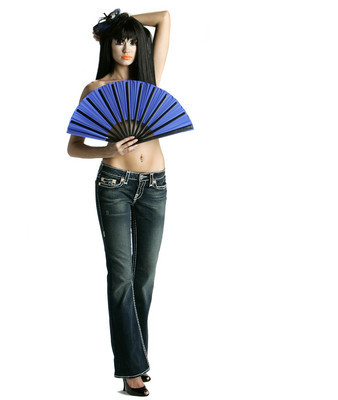Turning Japanese

Just when you thought premium denim had run its course, our friends to the east decided to change your mind. Japanese denim has fans refining their jeans taste and falling in love with denim all over again.
The difference between the east and west products comes down to manufacturing processes — dying techniques, stitching and looming. Each affects the dark look and coarse touch of Japanese denim, which consumers have proved more than willing to reach deep into their premium pockets for (upwards of $300).
With all the hype, American and European denim brands have decided if they can’t beat the Japanese brands — such as Evisu, Red Monkey and Sugarcane — they’ll join them. Sort of. Take a look at some of the brands you know and love that are borrowing from labels overseas to produce Japanese-inspired denim.
the raw deal
Most of the styles featured here consist strictly of Japanese-inspired denim; inspired being the key word. The real stuff, also referred to as raw denim, comes straight out of Osaka, Japan. And you won’t find it at Macy’s.
Chad Jackson, Evisu marketing manager, holds no punches on the Japanese-inspired matter: "It’s a denim forgery," he said. Sound like an outrageous charge? Take a look at some of the distinguishing factors that separate the imitations from the real deal.
The blues: The Japanese have been dabbling with indigo since the kimono’s hey day. Plus, most of their jeans use a hank dye process rather than rope dye. The former involves humans hand-dipping and oxidating the denim several times over; the latter relies strictly on machinery.
How we roll: Although not all Japanese denim is selvedge, most selvedge denim is Japanese. The term identifies use of the old school, slow-moving 29-inch shuttle looms used in the United States until the early ’80s when larger looms took over for mass production. This explains why Japanese denim and vintage have so much in common. The physical difference lies in the inner inseam of the pant leg. Selvedge edges boast white, neat, thick stitching; non-selvedge edges feature either fray or flimsy threading.
Don’t touch: If the words "soft," "yummy" or "light" come to mind when running your hand against the denim, you’re not touching a Japanese product. Think more along the lines of "rough," "rigid" and "coarse." Reason being, Japanese denim is raw, which means it hasn’t been washed, distressed or otherwise manipulated. What you buy is what rolled off the loom.
Au naturel: Speaking of distressed features — fading, rips, tears, etc. — Japanese denim is designed to let nature handle that. It’s referred to as the patina process, the natural aging of the jean.
Kabash the wash: To ensure the best patina possible, Japanese denim shouldn’t be washed for at least six months. It’s the only way your jeans will develop a set of whiskers (the lines around the crotch) and honeycombs (circles behind the knees) specific to your own body. "When you don’t wash it, the denim becomes totally unique to you," said Jackson.
Outside the box: The fit creates a boxy shape. This factor, coupled with the feel, explain why women have yet to embrace authentic Japanese denim.
Contact fashion reporter Xazmin Garza at xgarza@reviewjournal.com or (702) 383-0477.